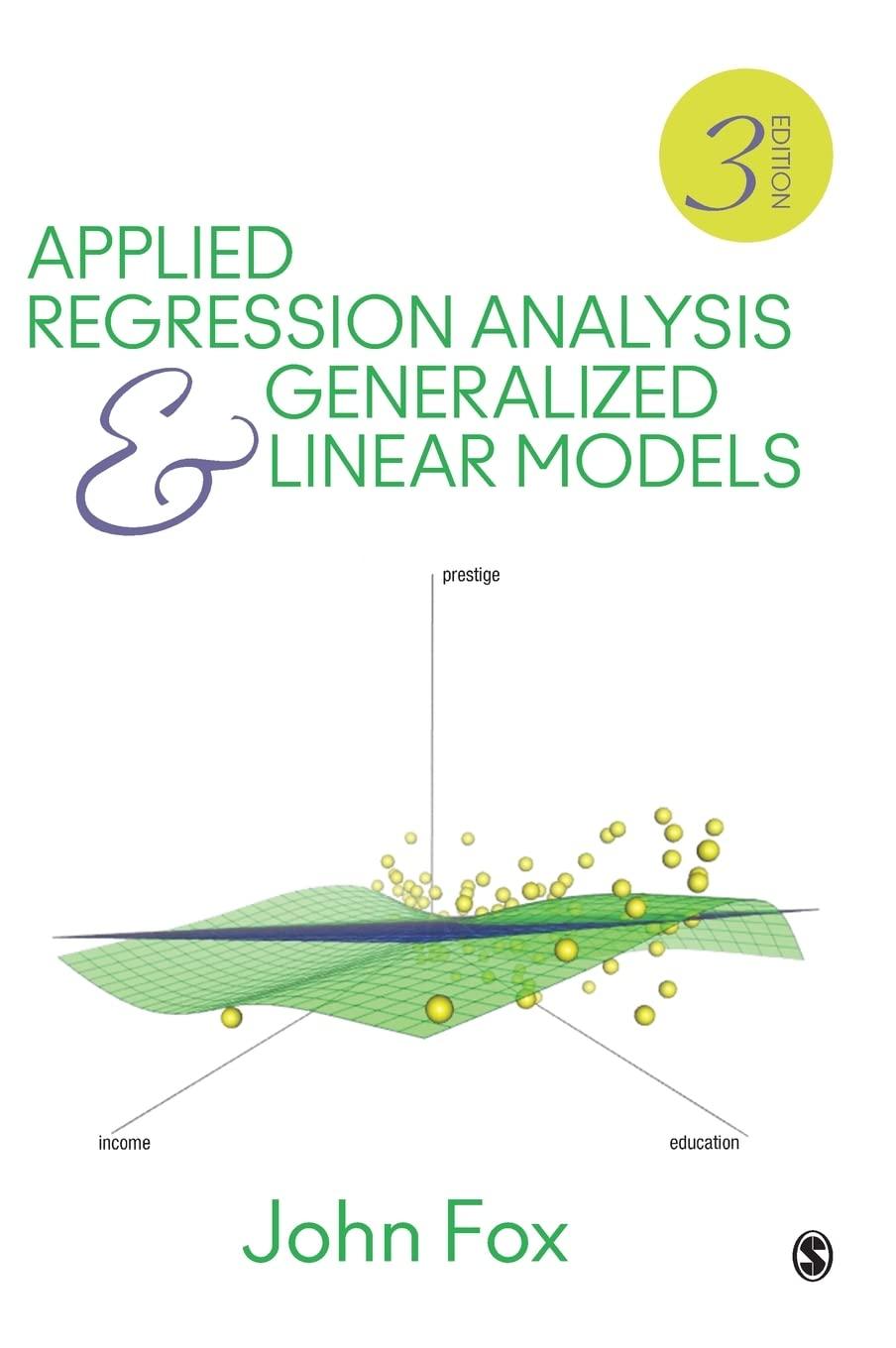Experimenting with component-plus-residual plots: Generate random samples of 100 observations according to each of the following schemes.
Question:
Experimenting with component-plus-residual plots: Generate random samples of 100 observations according to each of the following schemes. In each case, construct the component-plus-residual plots for X1 and X2. Do these plots accurately capture the partial relationships between Y and each of X1 and X2? Whenever they appear, ε and δ are Nð0; 1Þ and independent of each other and of the other variables.
(a) Independent Xs and a linear regression: X1 and X2 independent and uniformly distributed on the interval ½0; 1); Y ¼ X1 þ X2 þ 0:1ε.
(b) Linearly related Xs and a linear regression: X1 uniformly distributed on the interval ½0; 1); X2 ¼ X1 þ 0:1δ; Y ¼ X1 þ X2 þ 0:1ε.
(c) Independent Xs and a nonlinear regression on one X: X1 and X2 independent and uniformly distributed on the interval ½0; 1); Y ¼ 2ðX1 " 0:5Þ
2 þ X2 þ 0:1ε.
(d) Linearly related Xs and a nonlinear regression on one X: X1 uniformly distributed on the interval ½0; 1); X2 ¼ X1 þ 0:1δ; Y ¼ 2ðX1 " 0:5Þ
2 þ X2 þ 0:1ε. (Note the ‘‘leakage’’ here from X1 to X2.)
(e) Nonlinearly related Xs and a linear regression: X1 uniformly distributed on the interval ½0; 1); X2 ¼ jX1 " 0:5j; Y ¼ X1 þ X2 þ 0:02ε.
(f) Nonlinearly related Xs and a linear regression on one X: X1 uniformly distributed on the interval ½0; 1); X2 ¼ jX1 " 0:5j; Y ¼ 2ðX1 " 0:5Þ
2 þ X2 þ 0:02ε. (Note how strong a nonlinear relationship between the Xs and how small an error variance in the regression are required for the effects in this example to be noticeable.)
Step by Step Answer:

Applied Regression Analysis And Generalized Linear Models
ISBN: 9781452205663
3rd Edition
Authors: By John Fox





